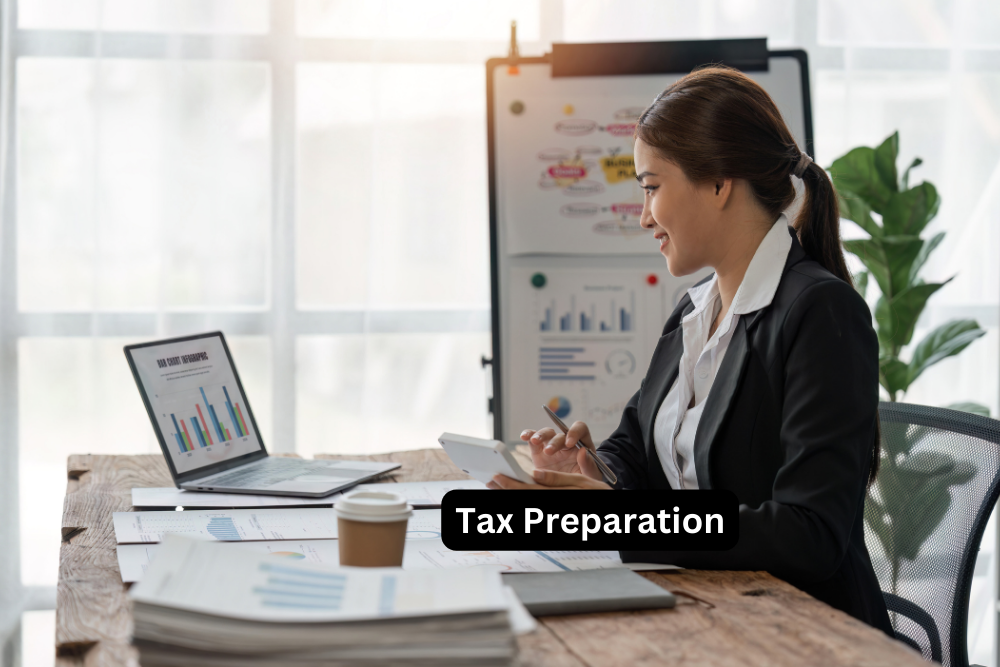Tax preparation can often feel like a daunting task, but with the right knowledge and tools, it can be a smooth and even rewarding process. Whether you're filing as an individual, a small business owner, or a freelancer, understanding the ins and outs of tax preparation is essential to ensure compliance with tax laws and to maximize your potential refunds. This guide will walk you through everything you need to know about Tax Preparation from gathering necessary documents to understanding deductions and credits.
Understanding Tax Preparation
What is Tax Preparation?
Tax preparation involves compiling and submitting your tax returns to the relevant tax authorities, typically on an annual basis. This process includes calculating your income, deductions, credits, and the amount of tax you owe or the refund you are entitled to. Proper tax preparation ensures that you comply with tax laws and take advantage of all available tax benefits.
Why is Tax Preparation Important?
Accurate tax preparation is crucial for several reasons:
-
Compliance: Ensures you meet legal requirements and avoid penalties.
-
Maximizing Refunds: Helps you claim all eligible deductions and credits.
-
Financial Planning: Provides a clear picture of your financial situation, aiding in better financial decisions.
Steps in Tax Preparation
1. Gather Necessary Documents
The first step in tax preparation is gathering all necessary documents. These may include:
-
W-2 Forms: For employees, showing wages earned and taxes withheld.
-
1099 Forms: For freelancers and independent contractors, detailing income received.
-
Receipts and Records: For deductions such as charitable donations, medical expenses, and business expenses.
-
Previous Year's Tax Return: Helps in identifying carryover items and ensuring consistency.
2. Choose the Right Filing Status
Your filing status affects your tax rates and eligibility for certain deductions and credits. Common filing statuses include:
-
Single: For unmarried individuals.
-
Married Filing Jointly: For married couples combining their income and deductions.
-
Married Filing Separately: For married couples choosing to file separately.
-
Head of Household: For unmarried individuals supporting dependents.
-
Qualifying Widow(er): For those who have lost a spouse and meet certain conditions.
3. Calculate Your Income
Accurately calculating your total income is crucial. This includes:
-
Earned Income: Wages, salaries, and tips.
-
Unearned Income: Interest, dividends, and capital gains.
-
Other Income: Alimony, rental income, and business income.
4. Identify Deductions and Credits
Deductions and credits can significantly reduce your tax liability. Common ones include:
-
Standard Deduction: A fixed amount reducing your taxable income.
-
Itemized Deductions: Specific expenses such as mortgage interest, medical expenses, and charitable contributions.
-
Tax Credits: Direct reductions in your tax liability, such as the Earned Income Tax Credit (EITC) and Child Tax Credit.
5. Complete and File Your Tax Return
Once all information is gathered and calculations are made, you can complete your tax return. This can be done:
-
Manually: Filling out paper forms and mailing them.
-
Electronically : Using tax software or online services for e-filing, which is faster and more efficient.
6. Review and Submit
Before submitting your tax return, review it thoroughly to ensure accuracy. Check for common errors such as incorrect Social Security numbers, mathematical mistakes, and missing signatures.
Tips for Efficient Tax Preparation
1. Stay Organized
Keep all tax-related documents organized throughout the year. Use folders or digital tools to store receipts, invoices, and other important records.
2. Use Tax Software
Tax software can simplify the process by guiding you through each step, performing calculations, and checking for errors. Popular options include TurboTax, H&R Block, and TaxAct.
3. Consult a Professional
If your tax situation is complex, consider consulting a tax professional. They can provide personalized advice, ensure compliance, and help you maximize your refunds.
4. Plan Ahead
Tax planning should be a year-round activity. Regularly review your financial situation, adjust withholdings if necessary, and keep track of potential deductions and credits.
Common Mistakes to Avoid
1. Missing Deadlines
Failing to file your tax return by the deadline can result in penalties and interest. Mark important dates on your calendar and set reminders.
2. Incorrect Information
Ensure all personal information, such as Social Security numbers and addresses, is accurate. Errors can delay processing and refunds.
3. Overlooking Deductions and Credits
Take the time to research and understand all deductions and credits you're eligible for. Missing out on these can mean leaving money on the table.
4. Not Keeping Records
Maintain thorough records of all income, expenses, and deductions. This is crucial in case of an audit or if you need to amend your return.
Conclusion
Tax preparation doesn't have to be a stressful experience. By staying organized, understanding the process, and utilizing available resources, you can navigate tax season with confidence. Whether you choose to prepare your taxes yourself or seek professional help, the key is to start early, stay informed, and ensure accuracy. Remember, effective tax preparation not only helps you comply with tax laws but also maximizes your financial benefits, contributing to your overall financial well-being.




